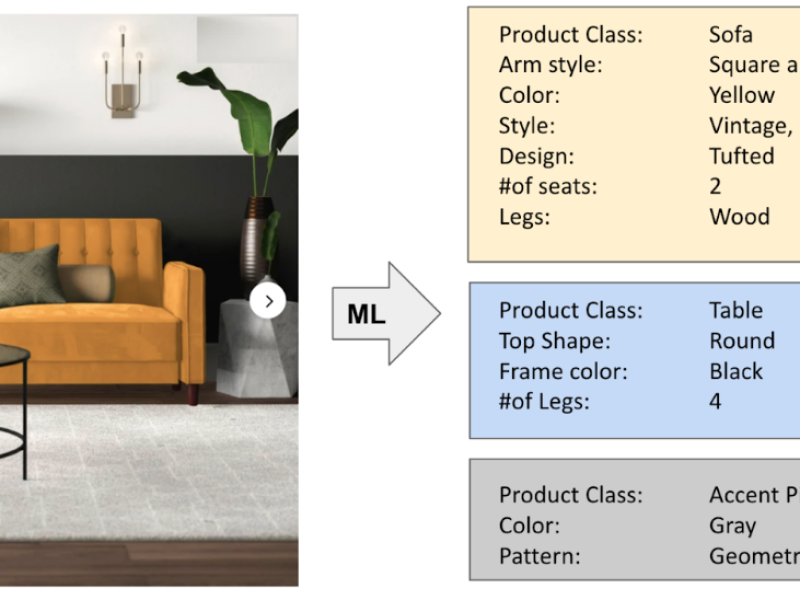One of our missions at Wayfair is to help our 22 million customers find the products they are looking for. For example, when a customer searches for a “modern yellow sofa” on Wayfair, we want to show the most relevant options from the tens of thousands of sofas available in our catalog. To do that, it is important to have a strong understanding of the products we sell. We use machine learning algorithms to analyze and understand the descriptive information (e.g. color, shape) of over 40 million products provided by more than 20 thousand suppliers in our catalog.
10 Min Read
When a Wayfair customer shops for a product that is just right for her home, color plays a big role. For example, a customer might say, “I am looking for a green chair.” Or she might say, “I am looking for a teal chair.” There may be various versions of these customer color search stories. As data scientists at Wayfair, we want to solve these customer problems by algorithmically extracting the color information from the products and assigning customer-friendly color names.
10 Min Read
High-quality lifestyle imagery is core to Wayfair’s ability to merchandise its catalog effectively and help customers shop confidently. Creating lifestyle images through 3D models enables rapid production of product visual merchandising at scale, drives simultaneous reduction in cost and speed to produce imagery, and unlocks new ways (e.g. AR, VR) for customers to engage with products. Early tests show 3D-generated images can provide high quality visual detail of our products and increase conversion rates for flagship brands (main products in Wayfair’s portfolio and to which customers most relate or identify Wayfair). Therefore, producing 3D models quickly and accurately is key to further reducing 3D imagery costs and driving revenue. In this blog, we will introduce how machine learning is utilized to aid 3D modeling at Wayfair.
10 Min Read
In early August, the Data Science (DS) team put on their first DS-wide hackathon. The global hackathon event brought together Boston and Berlin based data scientists for one day of hacking and demos. The event challenged teams to think big about how algorithms can transform Wayfair’s business and help unveil unseen possibilities. Some successful tools and products on our site, like our Visual Search tool, started as hackathon projects! The hackathon is a fun challenge to try out new methods or algorithms, explore a different part of the business, and collaborate with team members across disciplines.
5 Min Read
‘First impressions matter’.
15 Min Read
Wayfair merchandisers currently spend thousands of hours each year manually naming the millions of products we sell. This unstructured data is costly to maintain and subject to human error as individuals currently update a free text field. With Formulaic Naming, Wayfair is transitioning to a structured solution for naming based on other questions we already ask our suppliers about their products. Once we have this structured information, we can pursue Dynamic Naming, where the product name will vary based on where the name is displayed and the customer who is viewing the product. This week, David Short, a Product Manager in Merchandising Systems at Wayfair, will discuss the work he's doing with Merchandising Engineering to automate this process.
1 Min Read









